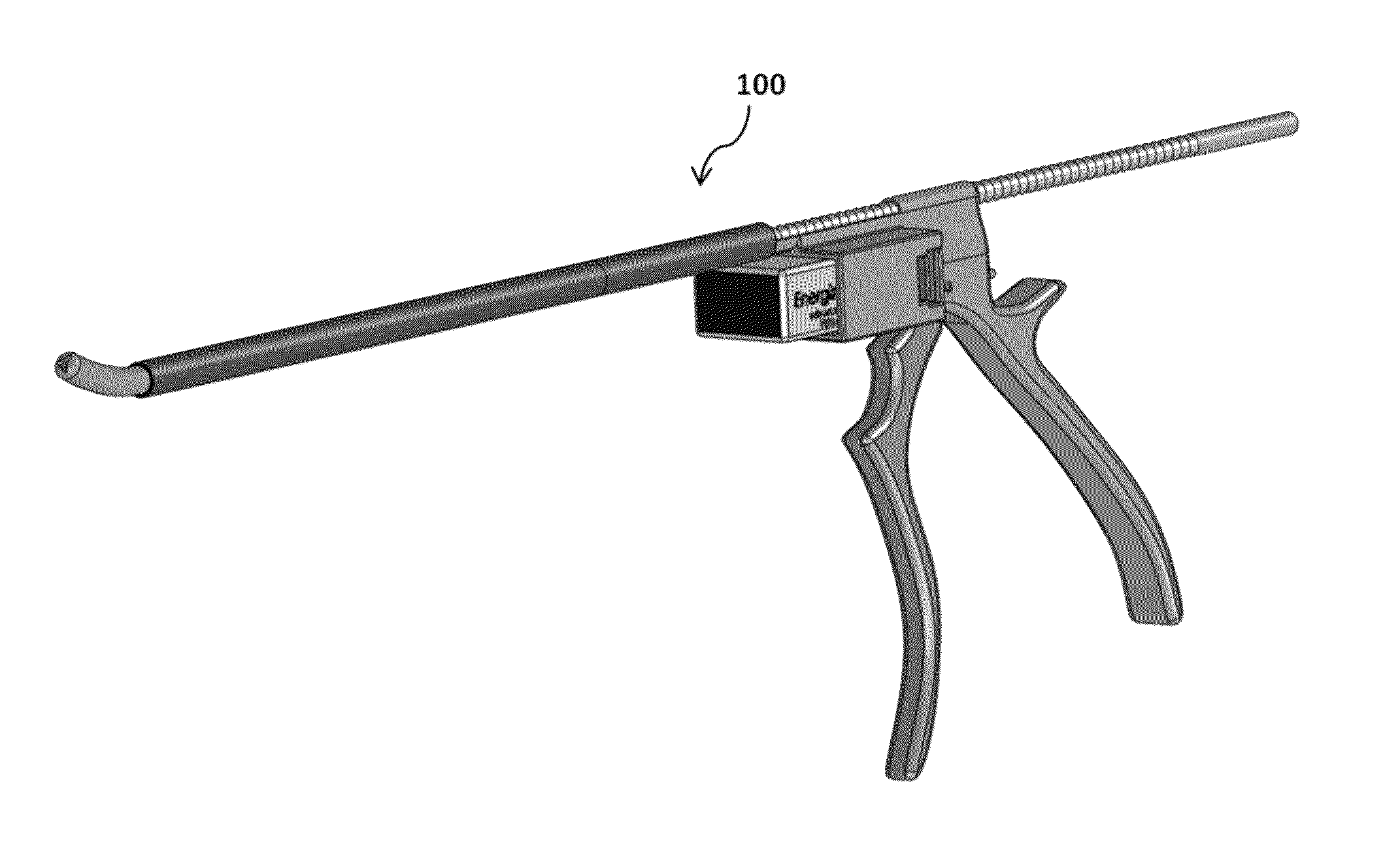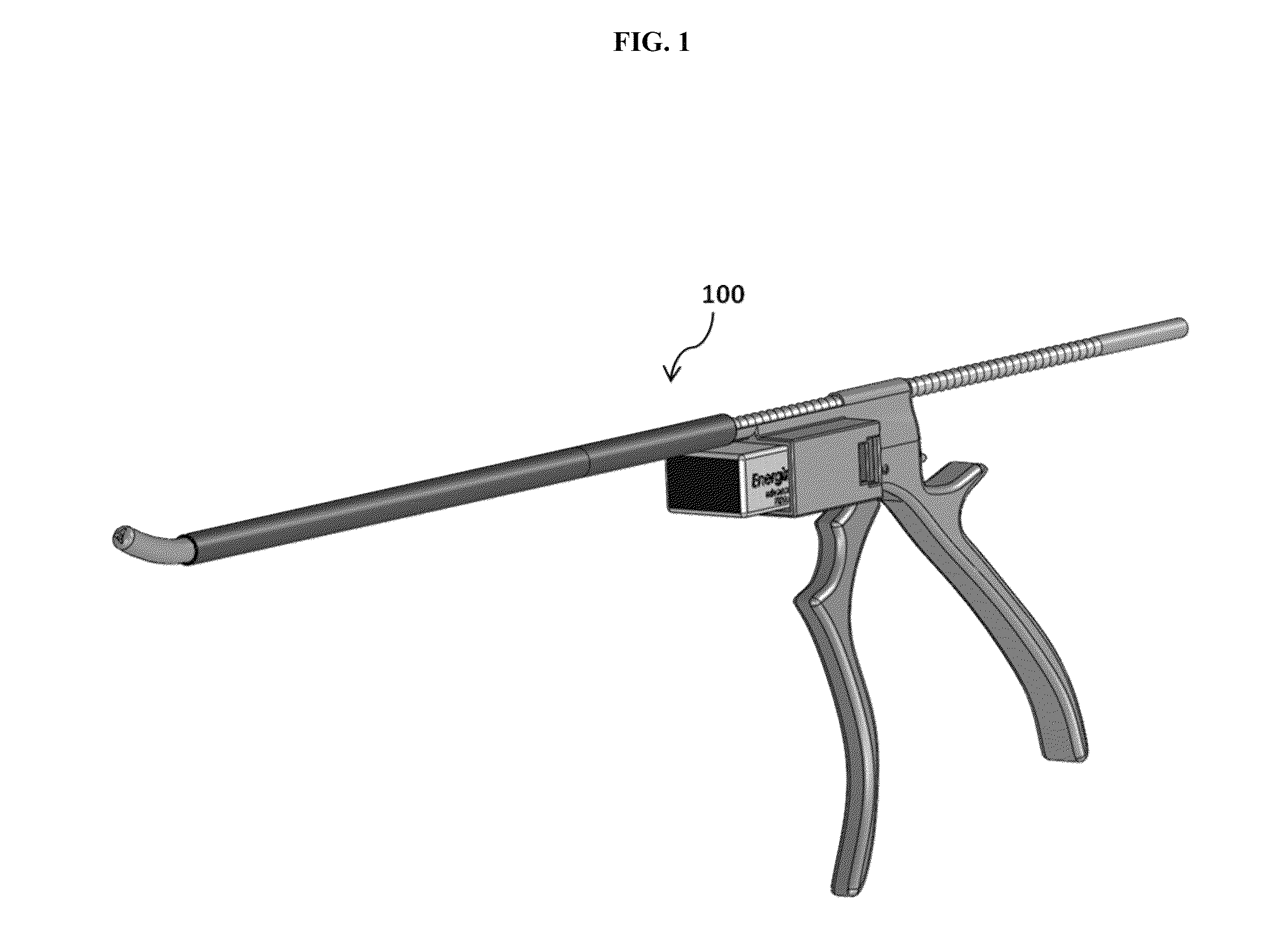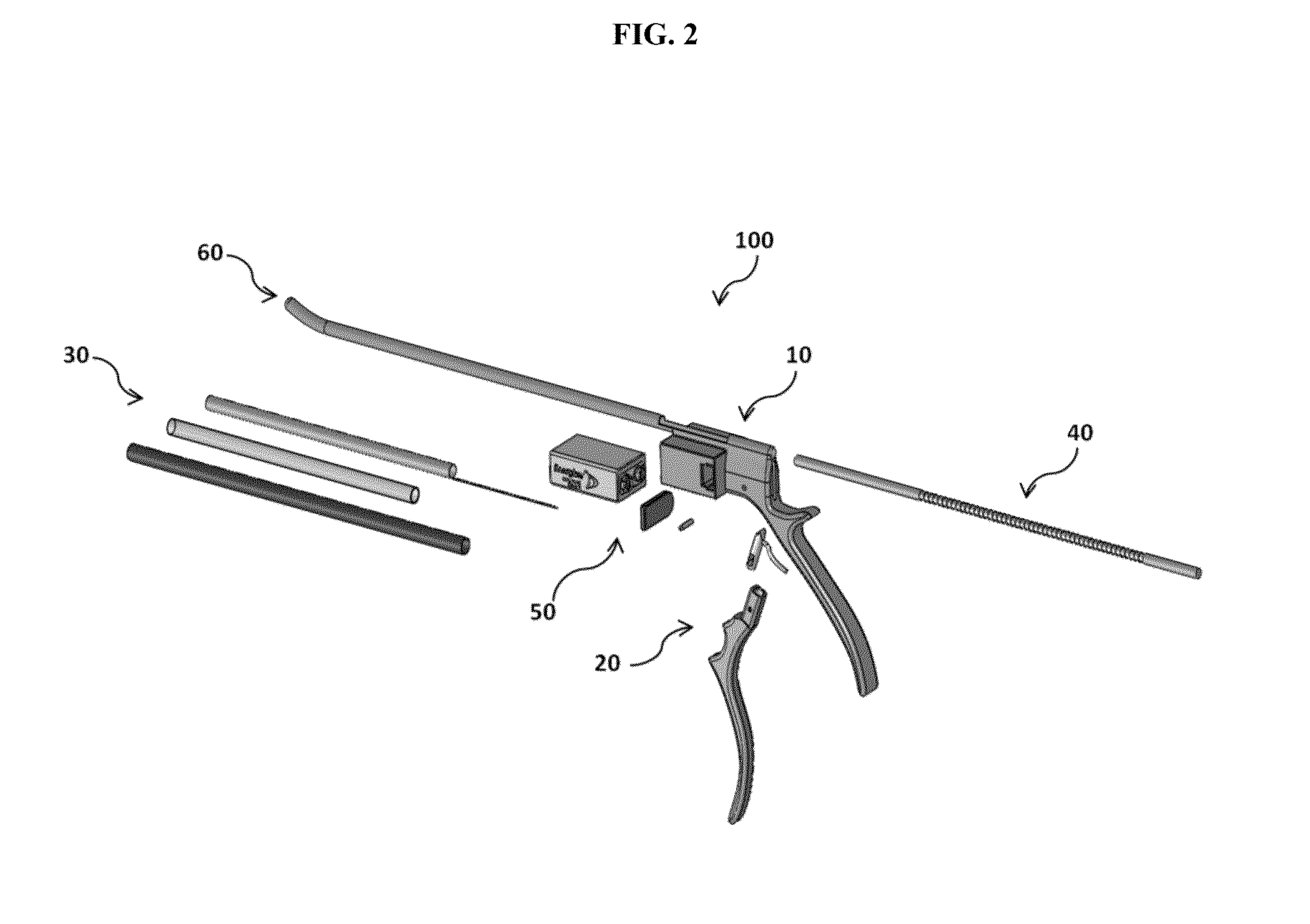Minimally invasive surgical applicator
a surgical and minimally invasive technology, applied in the field of minimally invasive surgical applicators, can solve the problems of significant and life-threatening anemia, bleeding obscures the surgical field, and impaired visualization from bleeding, and affects the accuracy, efficiency, safety, and speed of surgical operations.
- Summary
- Abstract
- Description
- Claims
- Application Information
AI Technical Summary
Benefits of technology
Problems solved by technology
Method used
Image
Examples
example 1
Applicator Design
[0079]Initial design efforts were directed to optimizing the application of the bone wax. To this end, three designs were tested. These included a retractable applicator, a modular applicator, and a roller applicator.
[0080]The retractable applicator investigated involved application of wax to the tip prior to application. In this embodiment, the tip is retracted into the outer shell and the applicator is inserted into the surgical site. The surgeon exposes the tip by pressing the outer button, and then applies the wax by depressing the inner button.
[0081]In the modular applicator, the grip and the tip designs are separated. Bone wax is added to the device by manually placing a small amount inside the tip before connecting it to the grip. Multiple tip designs such as those of FIG. 8 could be used.
[0082]While only three tip designs are shown, this modular design could allow for numerous other tip design alternatives. In particular, one tip design alternative could all...
example 2
Grip Design
[0097]Five grip design alternatives or trigger assemblies were evaluated and tested.
[0098]1. Lever Arm.
[0099]The lever arm is the simplest grip design. The top lever pushes a plunger through the tube attached to the bottom lever, extruding the wax. The tube travels along a track cut into the bottom lever so that it remains concentric with the plunger and torque is not experienced as the plunger is pushed down.
[0100]A three-dimensional printed model of the lever arm was developed. This proof-of-concept was ergonomically awkward and was very difficult to control the tube from which the bone wax was extruded. This suggests it would be less precise in applying bone wax to a specific location.
[0101]One advantage of this design is that it can be modified for the necessary mechanical advantage, which is based on the ratio between the lever length and the distance from the plunger to the hinge. The mechanical advantage translates a large force to a small distance. Furthermore, th...
example 3
Tip Design
[0113]The tip is the outlet of the bone wax applicator that shapes and spreads the wax. It plays a key role in controlling the wax application. Numerous tip designs were evaluated throughout the design process. They were divided into four categories: regular tip, modified tube tip, spatula tip, and mushroom tip.
[0114]1. Regular Tip.
[0115]The regular tip is the simplest tip in design. It is essentially an extension of the tube, but with a slightly smaller diameter. The smaller diameter is meant to compress and shape the wax prior to application. Although the simplicity of this design is appealing, it does not provide a large surface to spread the wax onto the bone. One example is given in FIG. 9A.
[0116]2. Modified Tube Tip.
[0117]Three modified tube tip alternatives were investigated, all of which are altered regular tips. The one-notched tip, FIG. 9C, consists of a regular tip with a small lip that can be used to spread the wax. Similarly, the two-notched tip, FIG. 9D, has ...
PUM
 Login to View More
Login to View More Abstract
Description
Claims
Application Information
 Login to View More
Login to View More - R&D
- Intellectual Property
- Life Sciences
- Materials
- Tech Scout
- Unparalleled Data Quality
- Higher Quality Content
- 60% Fewer Hallucinations
Browse by: Latest US Patents, China's latest patents, Technical Efficacy Thesaurus, Application Domain, Technology Topic, Popular Technical Reports.
© 2025 PatSnap. All rights reserved.Legal|Privacy policy|Modern Slavery Act Transparency Statement|Sitemap|About US| Contact US: help@patsnap.com



